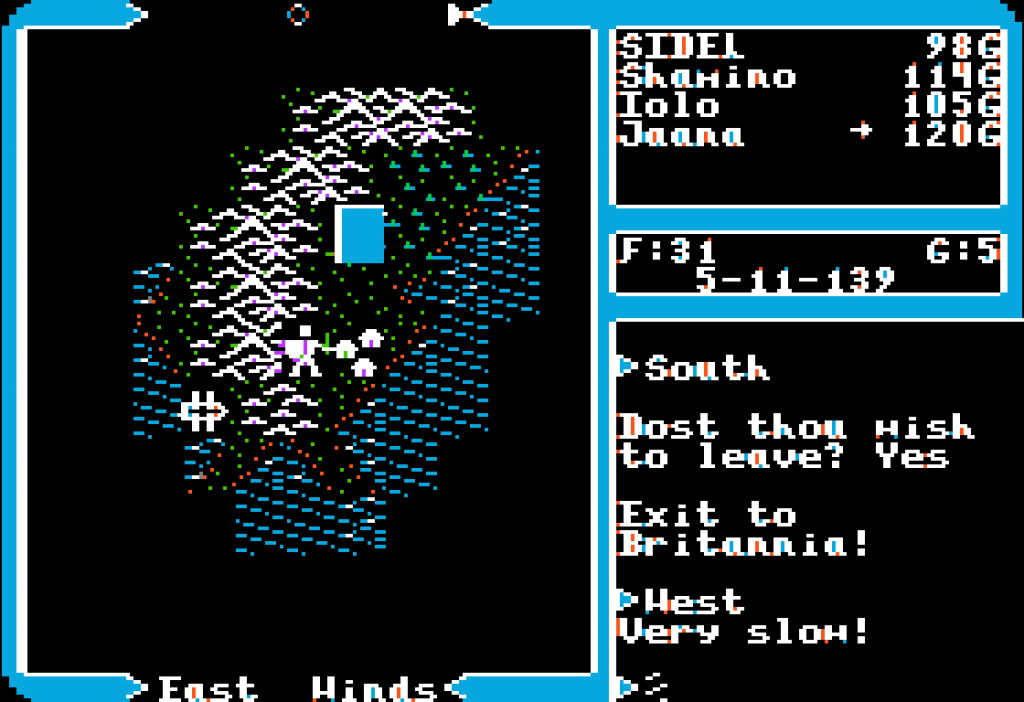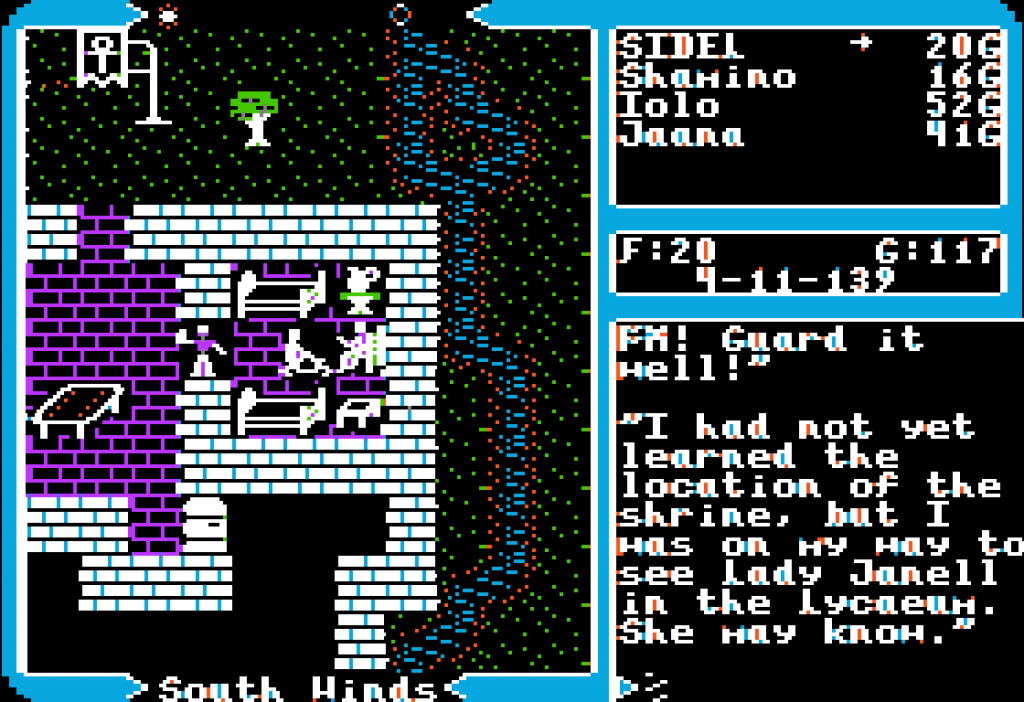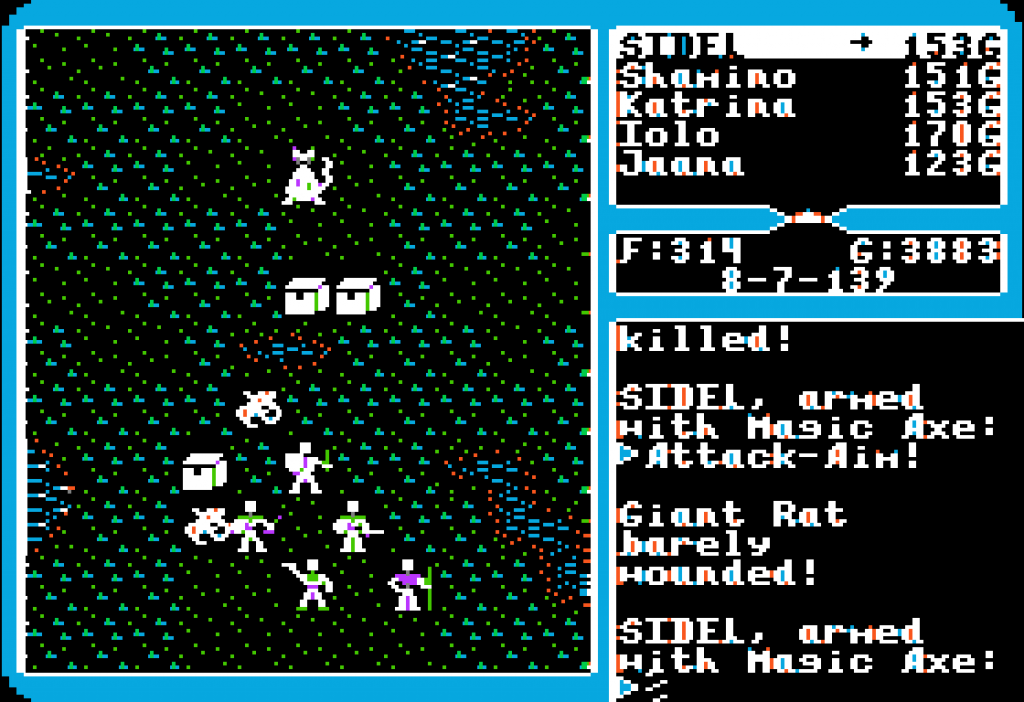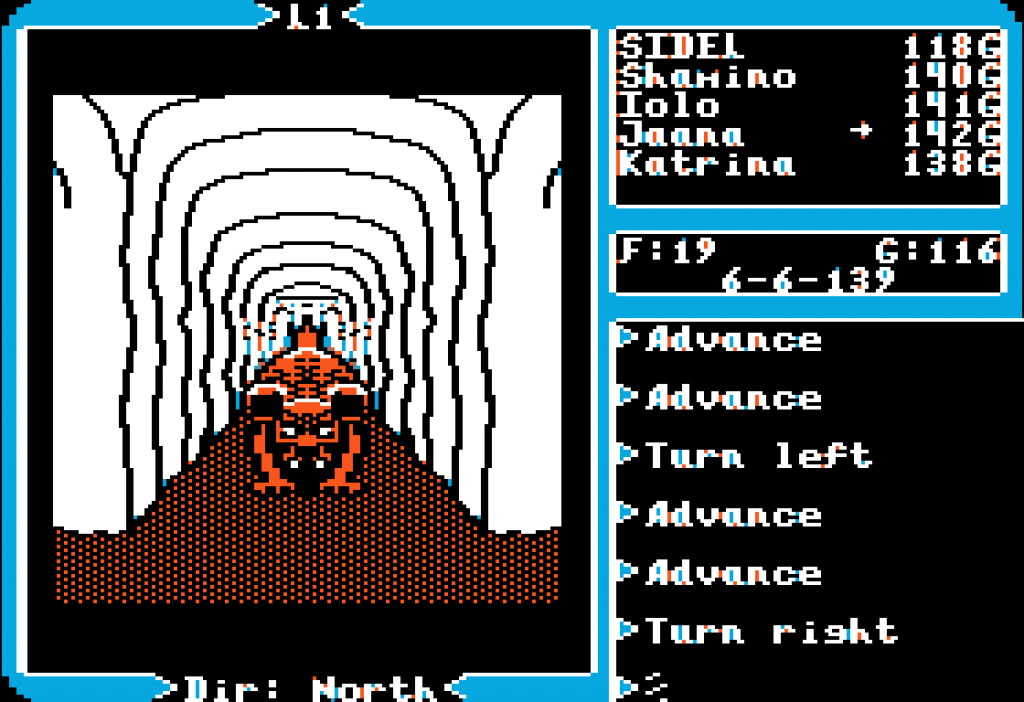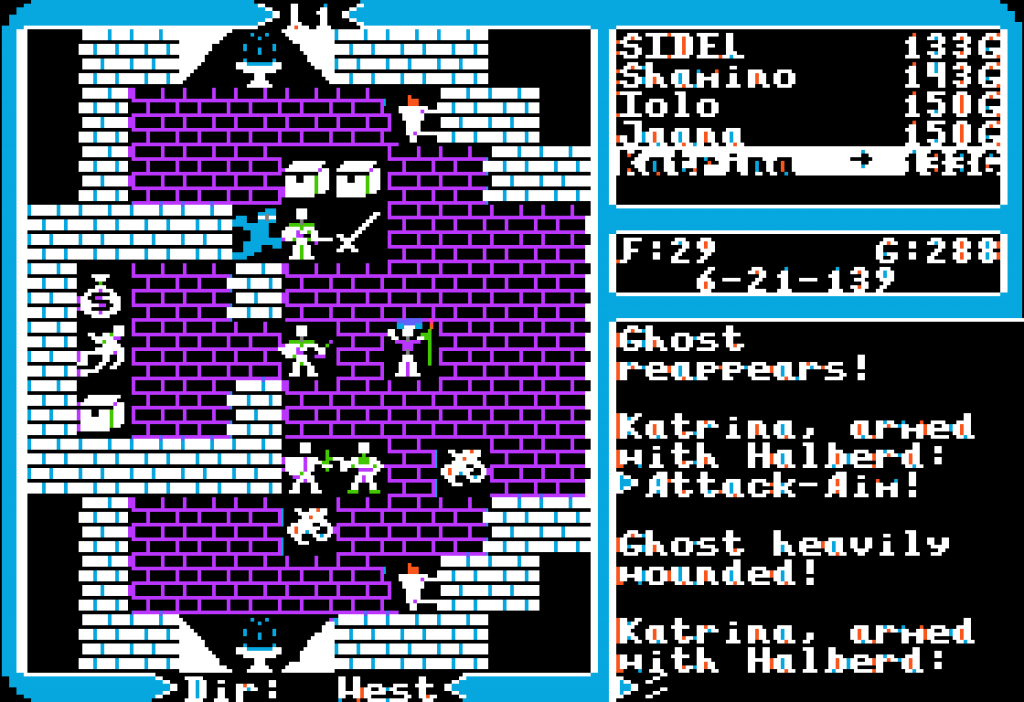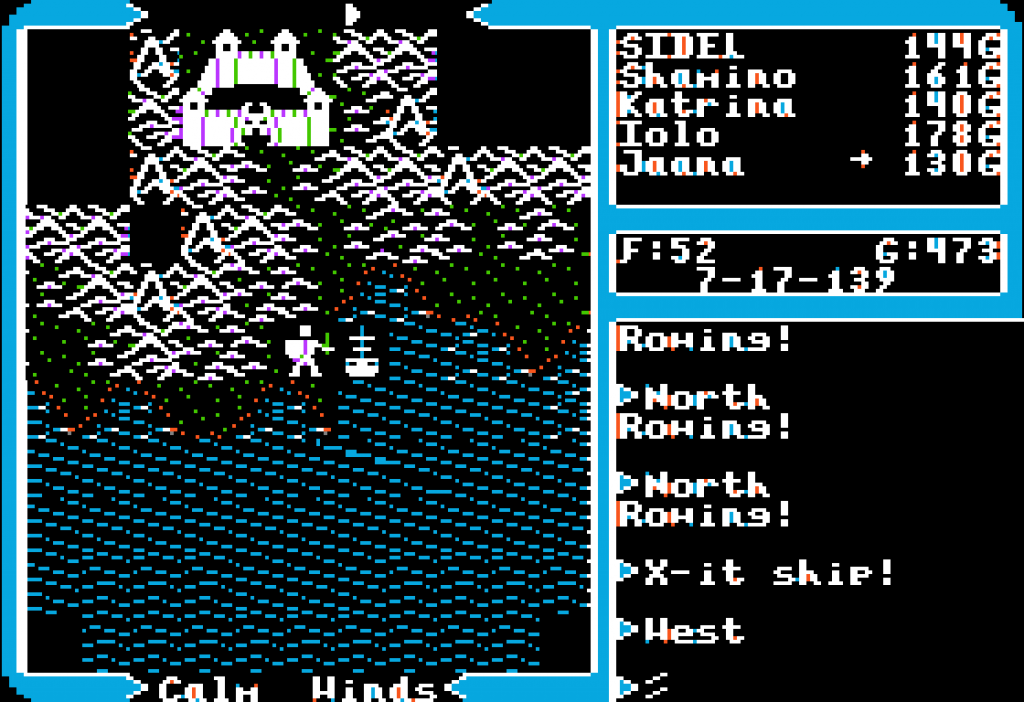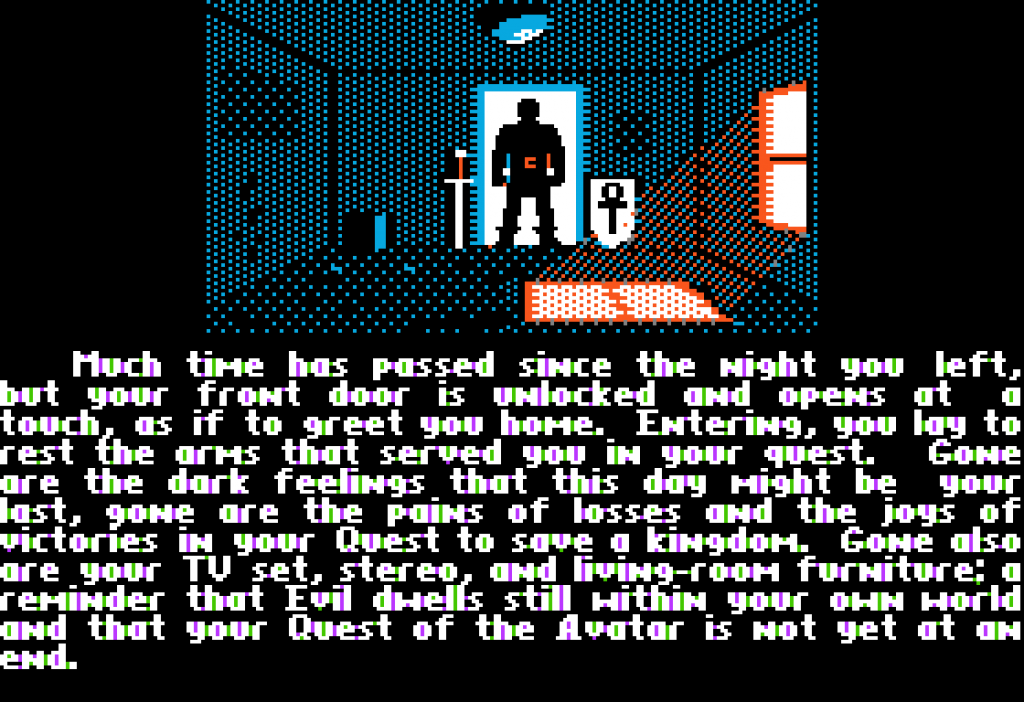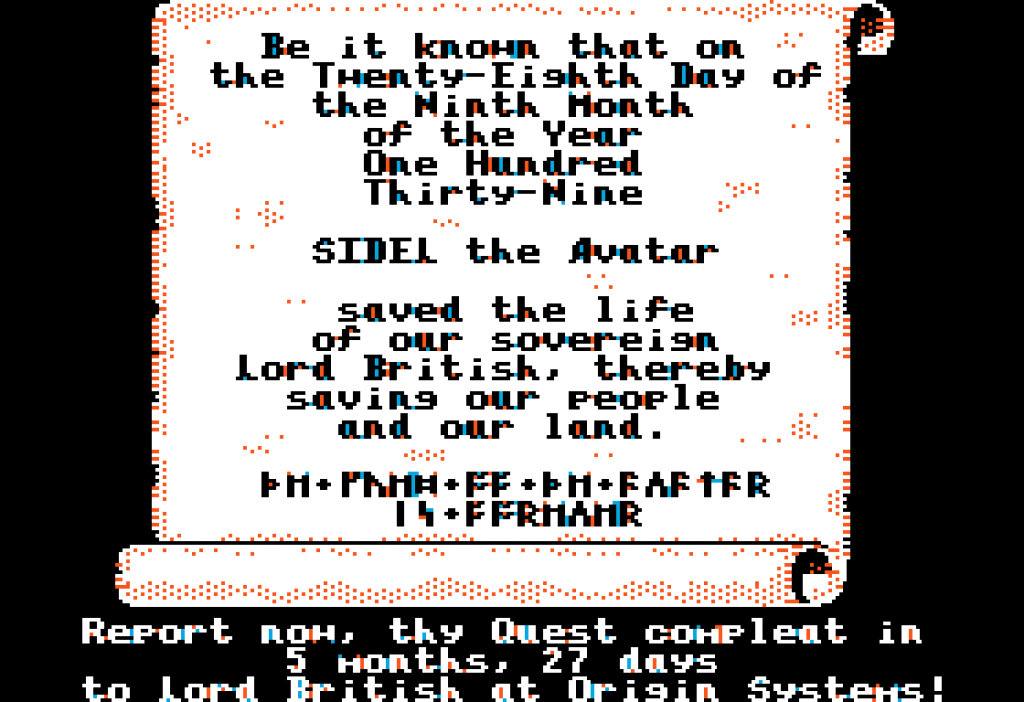Retro-Computing
A hodgepodge of posts that are all about old computers and technology like Apple ][ and Atari and vintage gaming platforms.
A hodgepodge of posts that are all about old computers and technology like Apple ][ and Atari and vintage gaming platforms.
Blake Stone was based off the Wolfenstein 3-D engine and included many graphical and game play improvements. The floors and ceilings are textured, there are many more enemies, a automap, and you can move back-and-forth through levels. All that is great but those were baby steps compared to the seismic shift that Doom brought to the genre. “So what?” You might ask, but realize that Doom was released a week after Blake Stone. One could say the game was doomed from the start, har har har!
Taken on its own merits the game is still okay especially when compared to Wolfenstein. It’s fast-paced and offers a little more variety. It still feels more like navigating a maze than exploring a world. Each episode is book-ended with some flavor text but it doesn’t ever really amount to a story.
The game is best approached as a leisurely time killer more akin to an iPhone game than an epic PC experience. There is some challenge at the higher difficulty settings but that comes more in ammo management rather than tricky enemy A.I. I didn’t hate it, but it is not an essential retro FPS. Rise of the Triad is a much better bridge between Wolf 3-D and Doom.
This is part of a five game package of Might and Magic games that GOG.com goes on sale for like three dollars every few months. I gave the first game the old college try but that was pretty painful even with third-party mods. The second game seemed like more of the same. This third game is probably the first one that’s even remotely accessible to a modern gamer.
It showcases a rather large graphical jump up to VGA. The character designs and pixel graphics are pretty great:
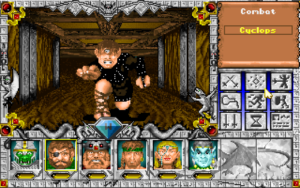
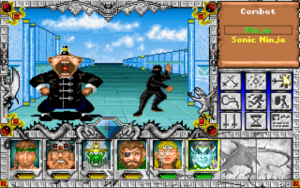
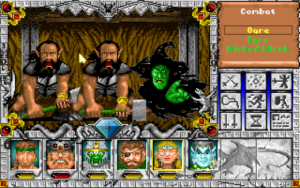
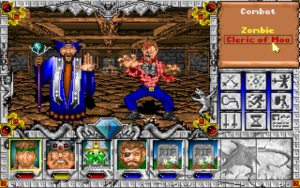
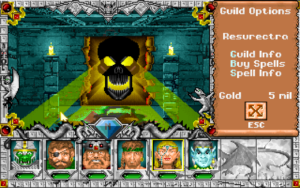
The game may look like Eye of the Beholder but it plays more like The Bard’s Tale. You control a party of characters who you recruit from a guild, and then you map your way through grid-based dungeons and towns fighting monsters and picking up text clues. The combat is a simple turn-based system that barely requires much strategy aside from knowing when to cast healing spells. If your team is powerful enough, you can just click attack, attack, attack and you will burn through most foes. That is, until you can’t. In some areas the enemy difficulty ramps up exponentially.
Where Might and Magic III begins to set itself apart from The Bards Tale is its large open over-world. This is also where the game begins to fall apart for me. The world is expansive, with many places to map out and explore, and yet you are given very little guidance as to what your goals are. After spending countless hours walking everywhere I realized I still had no idea what I was supposed to be doing. That’s when I just gave up. There were quests here and there within the towns but there was no meat to the story. Say what you will about simple “kill the evil wizard” RPG plots, but at least they give you a reason to continue playing. The satisfaction of leveling up kept me in there for a while and that might be enough to sustain hardcore role-players, but not me.
On a quick nostalgia kick I went back and replayed this, the first Sega Genesis game I ever played. I think this was the pack-in game for the Genesis and it seems an odd choice. At the time it was technologically impressive but the game itself is not terribly exciting. It’s a side-scrolling fighting game in which the main challenge is figuring out the best attacks (kick or punch, that’s it) against the various enemies. The game really comes down to rote memorization.
The most exciting part is collecting the metamorphosis powerups that transform your character into a werewolf, dragon, werebear, or tigerman. Furries, rejoice! Once you transform you’ll become fairly invulnerable and you soon face a stage boss. Most of these bosses can be beaten with attacks that feel like cheap exploits. For example, move in close and spam the electric-shock button and the eyeball thing dies is seconds.
As flawed as the game is, I still enjoy playing it if only to experience the joy of kicking things while wearing jockey shorts.
Rise of the Triad is a first-generation FPS that technologically sits somewhere between Wolfenstein 3-D and Doom. In fact, it started its development as a follow up to Wolf3D but eventually became its own thing. The map designs are somewhat limited because they are restricted to an orthogonal grid layout. But, on the positive side, the engine allows for the use of a lot of vertical space and overlap. There are raised catwalks, hovering platforms, and bouncy jump pads. The bulk of the gameplay is learning to navigate the various mazes of platforms, secret touch plates, deadly traps, and moving walls.
Of course the biggest innovation of this game was its excessive gore! It’s where the term gibs originated, which describes the flying body parts when an enemy is exploded.
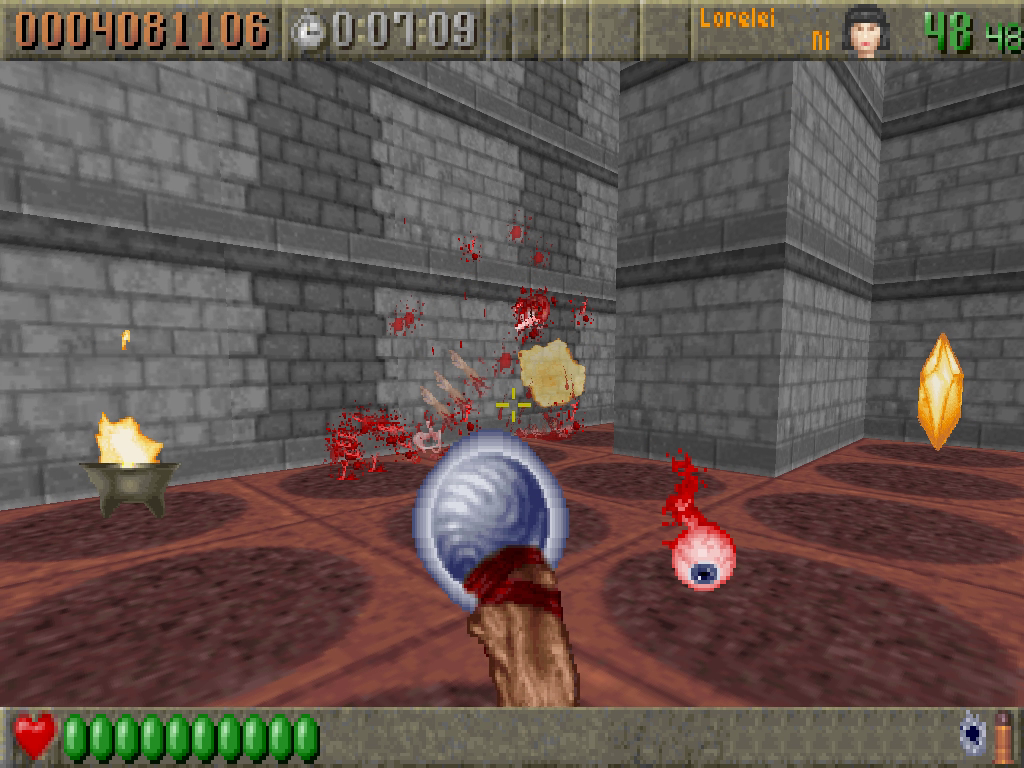
I’ll admit that my love for this game is mostly nostalgia. The actual shootouts are a bit repetitive due to simple enemy A.I. and a lack of variety. Most of the time you are just mowing down everything with your infinite ammo machine gun (which sounds like an outboard motor). There are about half-a-dozen limited use missile weapons and they are all great and it’s always a thrill to pick one up and start blasting away. I wish more effort had been placed into creating these minion baddies. I know they could have been better because each of the four episodes ends with a fun and challenging boss fight that makes you realize how fast and fun the game can be.
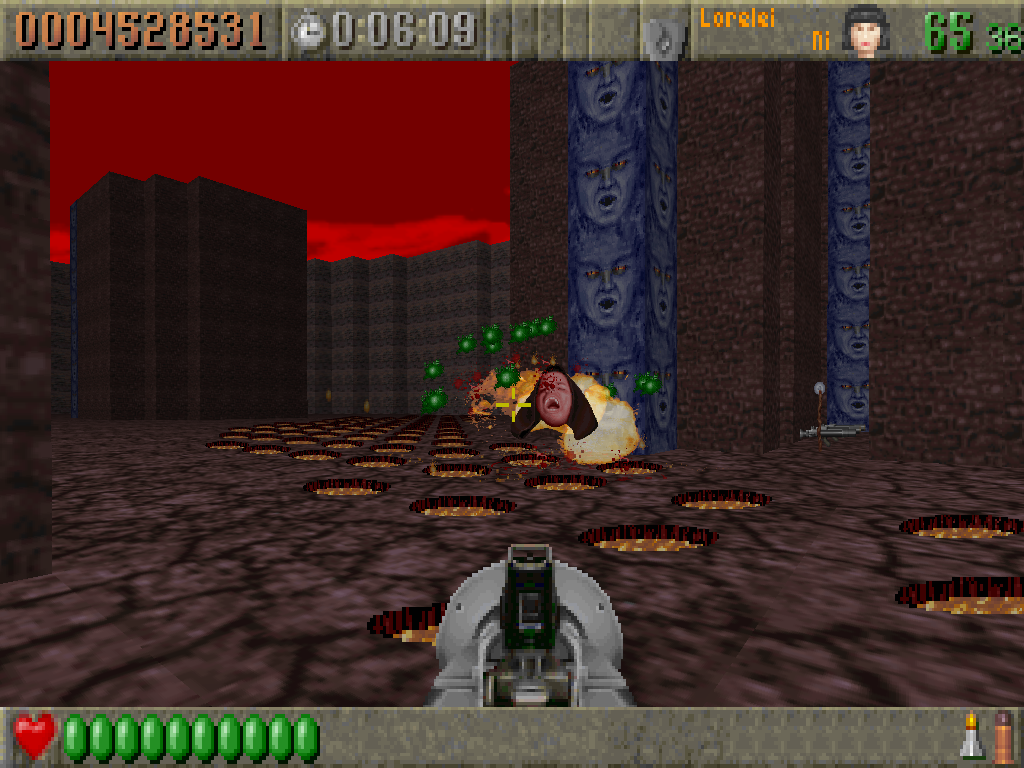
Now I would be remiss if I didn’t mention the best and most creative part of ROTT: the insane power-ups. Namely God Mode which makes you taller, invulnerable, and able to shoot cosmic energy balls that kill everything on the screen. All the while you are moaning with god-like power!
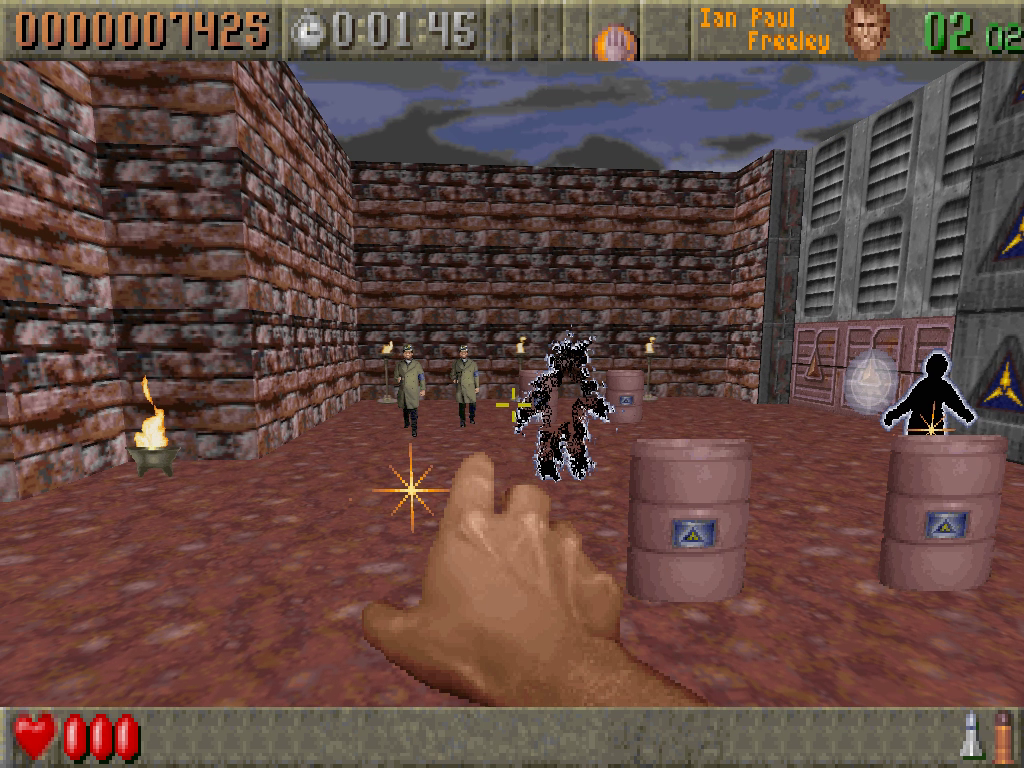
The is also a Dog Mode which allows you to craw under some obstacles and a few negative power-ups too (shrooms mode and elastic mode).
All said, Rise of the Triad: Dark War remains playable and fun decades later. It can be purchased for 60¢ or so on a seasonal Gog.com sale. The best way to play it is to use the mod called WinRottGL which can easily be found on the ‘net for free.
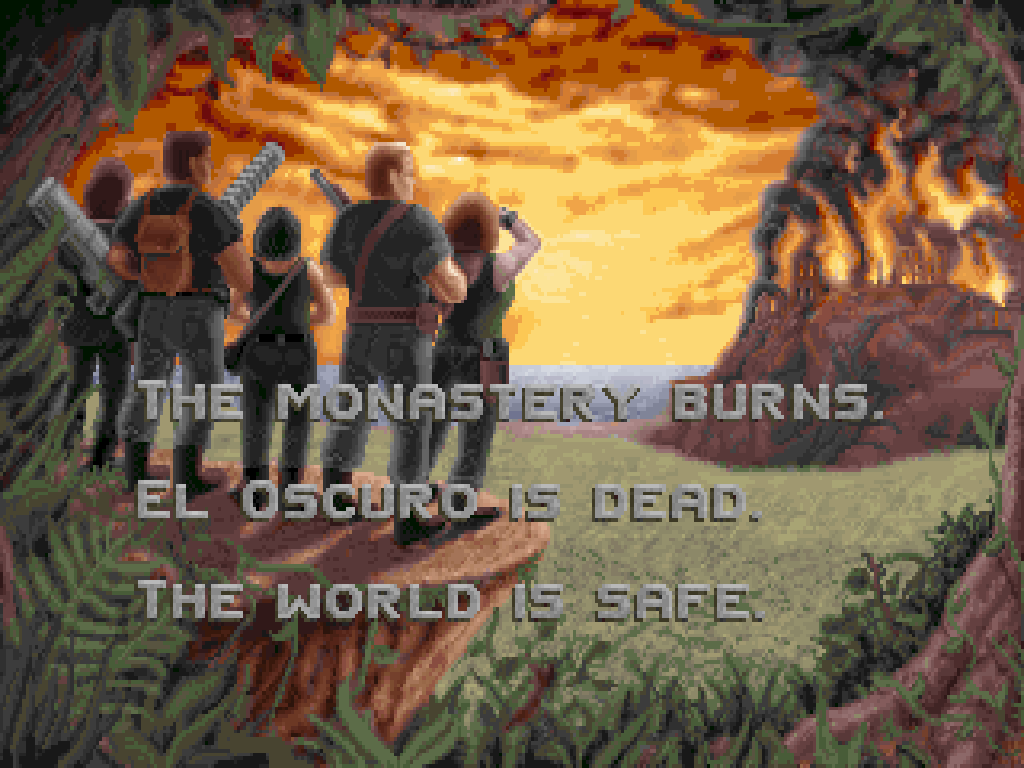
I played all of the sequels to this RPG that were available on the Sega Genesis, two on the actual hardware and the last one as a Virtual Console game. I am finally getting around to playing the first game in the series on the Sega Master System.
Growing up in the 80s, I never actually saw a Master System in person and knew of nobody who owned one. Yet there are hundreds of games for the system and a lot of folks consider Phantasy Star to be one of the best. I enjoyed it for the most part, but, if not for the conveniences of emulation, I would not have been able to get through it. State saving and CPU speed boosts help to get through the most tedious parts of the game play.
The turn-based combat mechanics are incredibly basic. Your characters can ether attack, run, talk, or cast spells. Talking is useless. There are only about four combat spells and one protection spell. Ninety percent of the time I would go into fast emulation and just spam the attack button. It’s really not until the final few dungeons that I had to think a little more about tactics. This is too bad, because most of the game is grinding to level up.
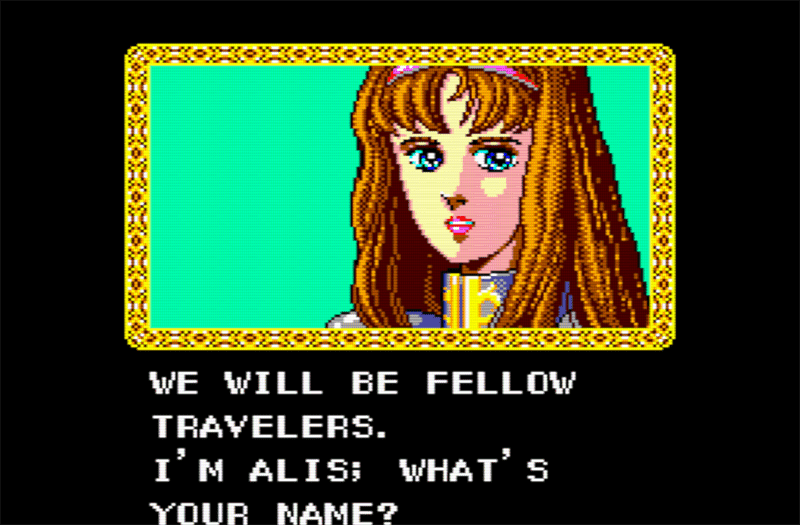
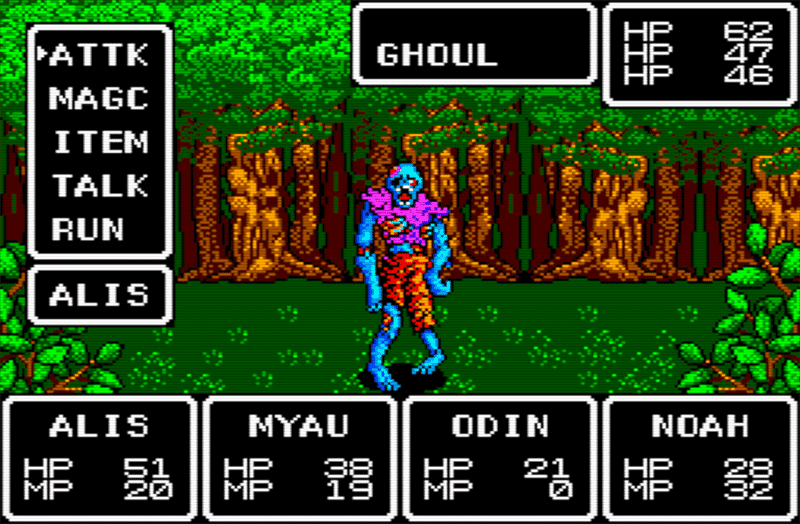
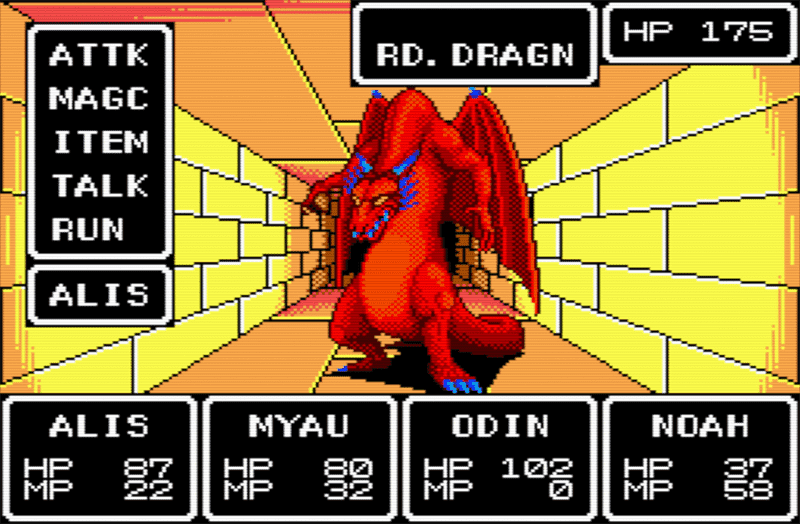
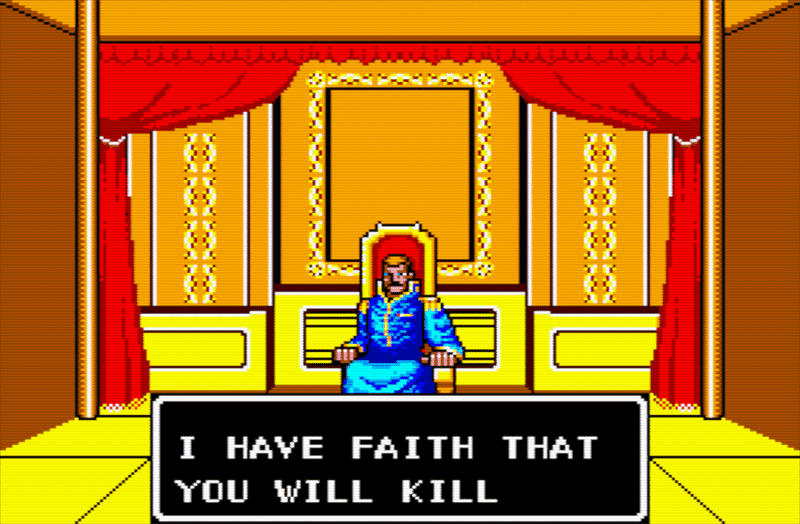
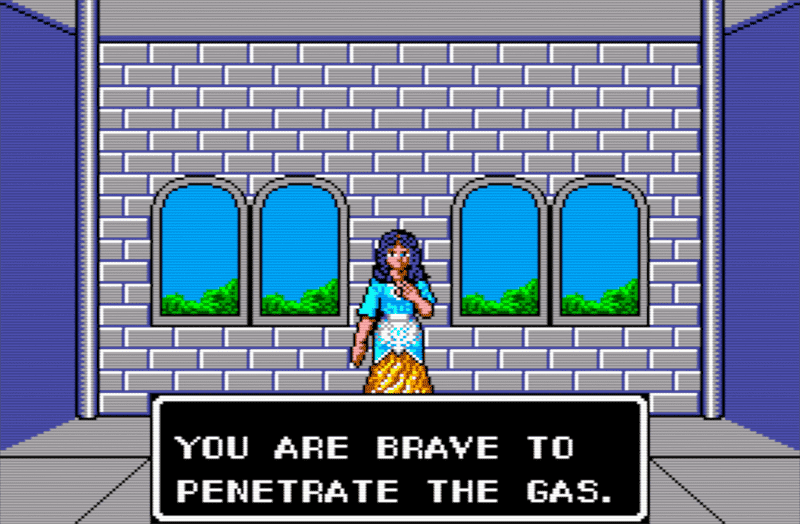
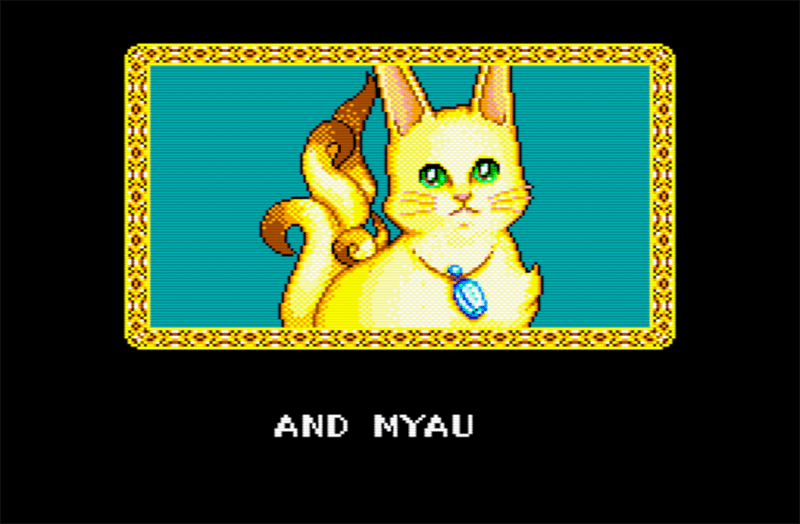
There is barely a story. The gist of it is simply to get revenge for the death of your brother. You advance through the game by finding items that give you access to more regions and dungeons. The dungeons are the core of the game. They are impressively rendered as first-person perspective mazes. Much of the game’s challenge is then mapping out these mazes as you would in Eye of the Beholder.
Despite the flawed mechanics and threadbare plot, I enjoyed most of the experience. There’s a very casual pacing to the game and enough variety to keep it interesting.
Every couple of years I get back into emulation, mostly as a reaction against some massive open-world game I just spent hundreds of hours playing. This time ’round I enhanced my retro-gaming experience with the purchase of an 8BitDo M30 gamepad which mimics the layout and feel of a six-button Genesis controller.
Crusader of Centy is a Genesis game which I only know from grabbing a pack of a zillion ROMs from the Internet back in the days of the Genecyst emulator. It has the look and feel of a console JRPG but is really a simple action game with some puzzle moments. It’s styled very much after the original Zelda with a top-down view and sword-shooting attacks. Also, if you are looking for a copy on Ebay it will cost you more than a grand.
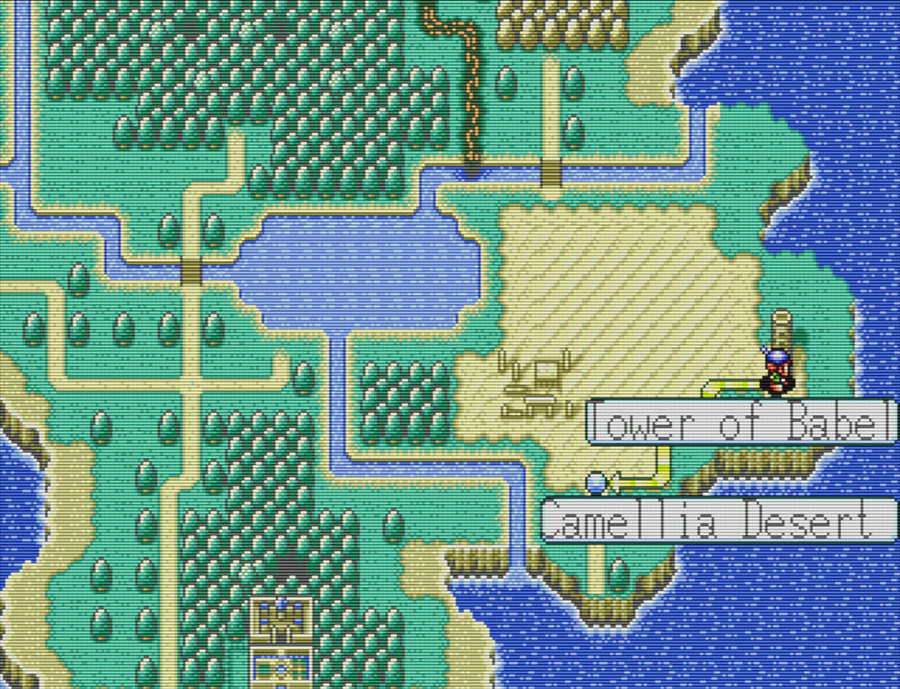
Unlike many games on the Genesis, Centy is bright and colorful with smooth animation and excellent pixelated character design. Along with the cheery music, this feels more like a Nintendo game than an exercise in x-treme Blast Processing™.
The controls work well for movement and interaction but combat is a bit clunky. Your sword never quite swings fast enough and enemies don’t react to hits other than their sprites blinking. Outside of boss battles, you are better off just avoiding fights since there is no leveling-up or noteworthy loot drops. The main hook of the game is collecting animal friends which give you special powers. You use these powers to get past obstacles and occasionally as specific means of attacking a boss.
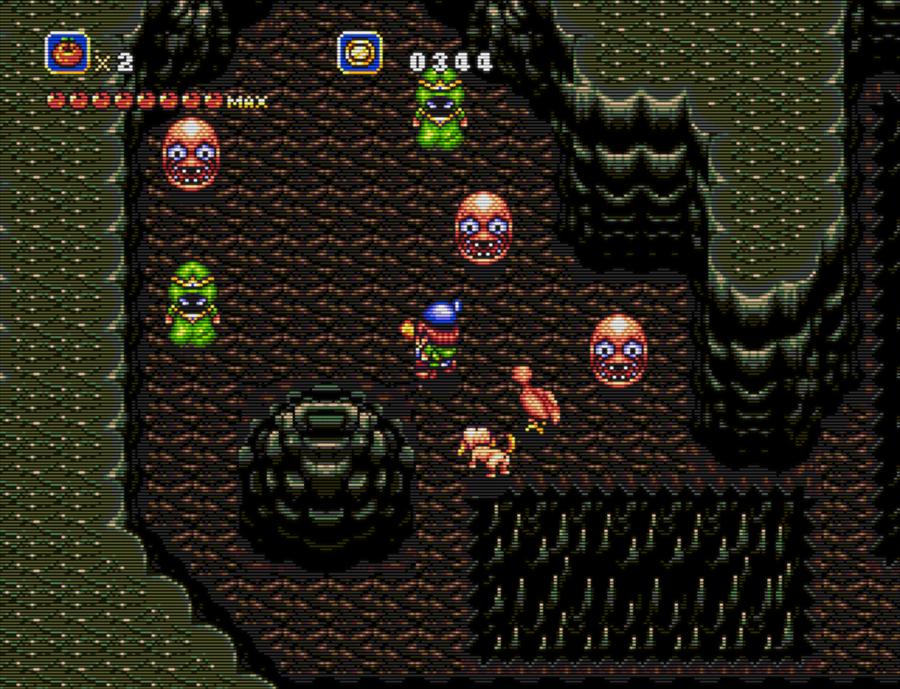
All this makes for a very light and casual gaming experience. Unfortunately, there is very little of interest in the overarching plot in the game. At one point there is some time-travel to mix things up, but mostly its going from point A to point B for unspecified reasons. The dialogue is terse and bland and there are no memorable characters. A more developed narrative would have added so much more. Instead we are left with a very pretty but shallow action adventure.
I was actually enjoying this game but, after twelve or so hours of play, I discovered that the GOG version is buggy to the point of being unbeatable. I reached a moment when I needed to find a Neanderthal chieftain only to discover that his sprite wouldn’t render on the map. Something was there and I could attack the empty space, but I was not allowed to trigger the necessary dialogue to complete my quest.
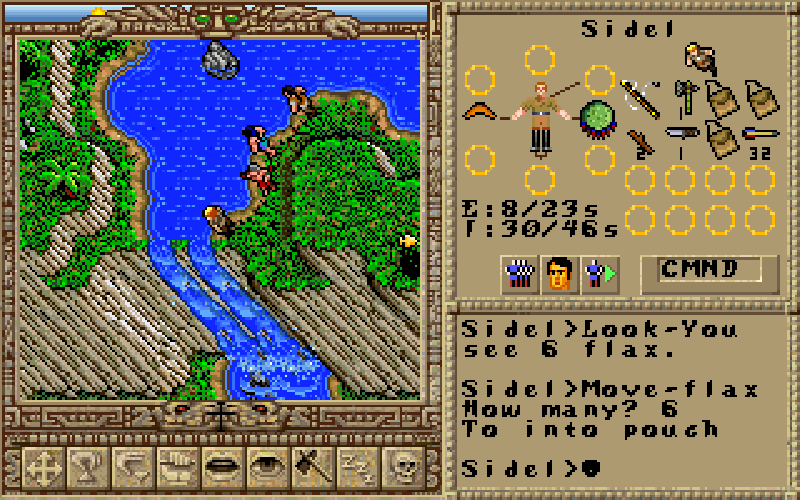
Savage Empire uses the fantastic Ultima VI game engine. This, along with Martian Dreams, was the last group of Ultimas that still felt like the Apple ][ games. Unfortunately, the jungle setting does not lend itself to much topographical variety. Everything was the same two or three greens and I could never tell if I could walk through a tree or not. This becomes a source of endless frustration very quickly.
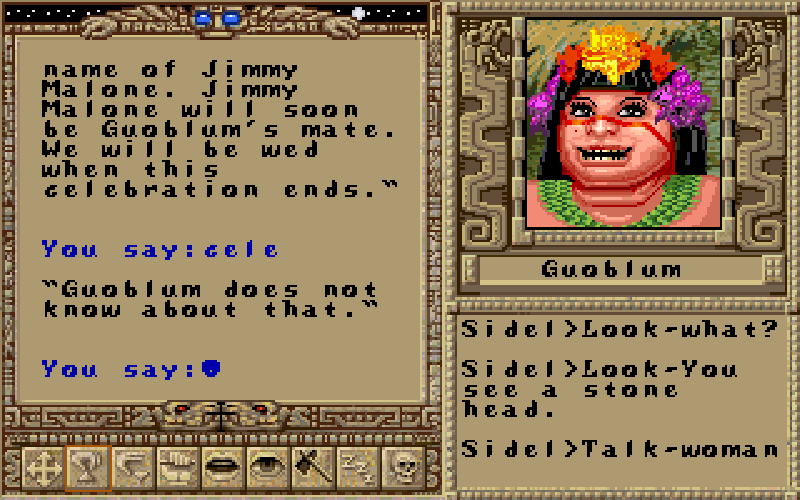
The best part of the game are the various character headshots. These are visible during the many dialogue sequences that the game offers using its highlighted-word method of talking.
By this point in their history, the Ultima games were much more like large, open-world adventure games. Combat and character development are barely part of the game. My problems with this game are mostly with the bugs and the clunky mechanics. There is a great, original game here but it’s just to hard to get passed the technical flaws. This engine needs a video game “remastered” version.
A pandemic ago I decided to heed the warnings on the Apple ][ Facebook group and remove the 30-year-old battery from my Apple IIgs computer. This is harder than it should be since Apple thought it was a good idea to permanently attach this ticking time bomb to the motherboard. My solution was to clip out the old battery and solder in a plastic battery holder instead. This is not that hard to do, but I am a complete klutz when it comes to soldering. Destroy the motherboard with a mountain of silvery metal was always a possible outcome. I documented the process and present it here. Originally I had intended to do a hilariously comic narration over the video but I eventually came to my senses. Enjoy the video, video enjoyers:
The fake red Boba Fett is at it again in this sequel to Crusader: No Remorse and he just can’t stop murdering office workers! This is pretty much a straight up continuation of the first game with only a few improvements in controls and game play. Again, don’t bother with mouse controls and just force yourself to learn to use the keyboard with a heavy reliance on the shift and control keys to run and roll respectively. The best path to success is to shoot everything and take your time looking out for traps. Stealth, unfortunately, is not really an option.
There are still a bunch of bad FMV cutscenes but the story is irrelevant. One of the big improvements over the first game is the minimizing of the between mission base scenes. There still is a base to refresh your supplies, but you aren’t force to shop for items and talk to everybody.
The game looks great and plays pretty well once you get the controls, but this series is still begging for a modern remake.
Ultima V is perhaps the pinnacle of gaming on the Apple ][ computer system. While I thought that Nox Archaist built on the basic mechanisms and presentation in a way that made this type of old school RPG more accessible to modern tastes (and is still a great game on top of that), Warriors of Destiny is unmatched in terms of scope, storytelling and core game play mechanics. Although the sprites are simple, the world of Britannia is filled with detail. This ranges from interactive world objects such as clocks, stockades, and harpsichords, to rich and evocative dialogue interactions. And even a set piece or two:
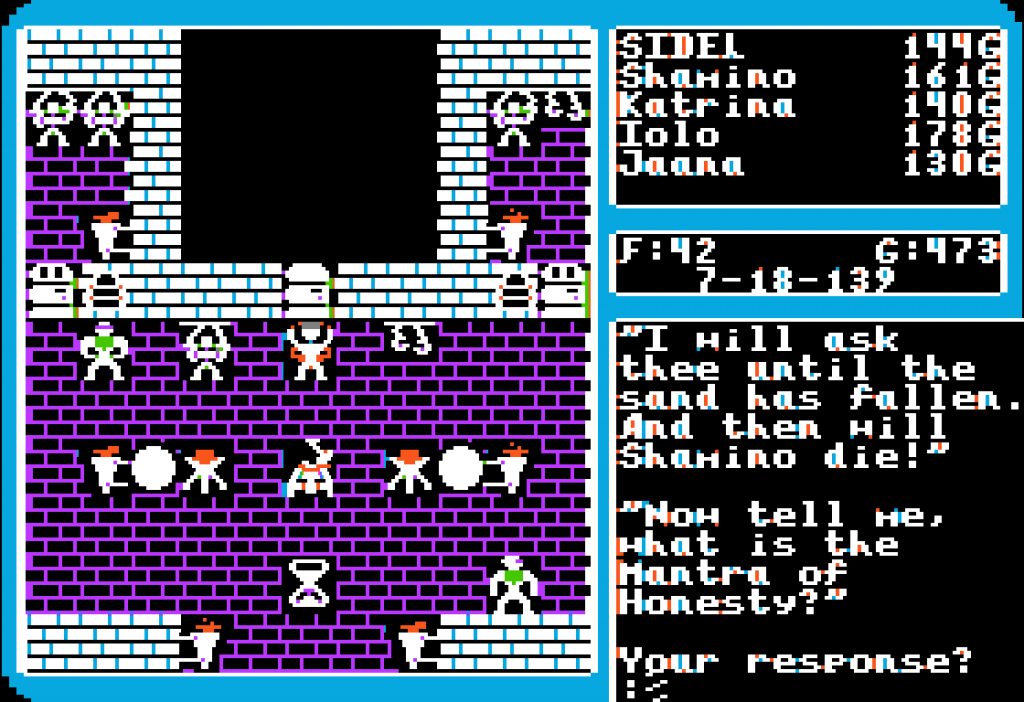
It has taken me quite some time to finish this game. I bought it on release some thirty-plus years ago and played it on my IIgs for hours upon hours. I never was able to beat the game though. I think I got about two-thirds the way through, having defeated the Shadowlords and only having that final quest to rescue Lord British remaining. Simple, just descend through an eight-level dungeon, make your way through a uncharted section of the underworld, avoid lava, make sure you have the correct item to pass the magical barrier, have that final word of power ready, descend through another eight levels of the game’s final dungeon, and did you remember to pick up that secret object which allows you to save Lord British because if not, too bad.
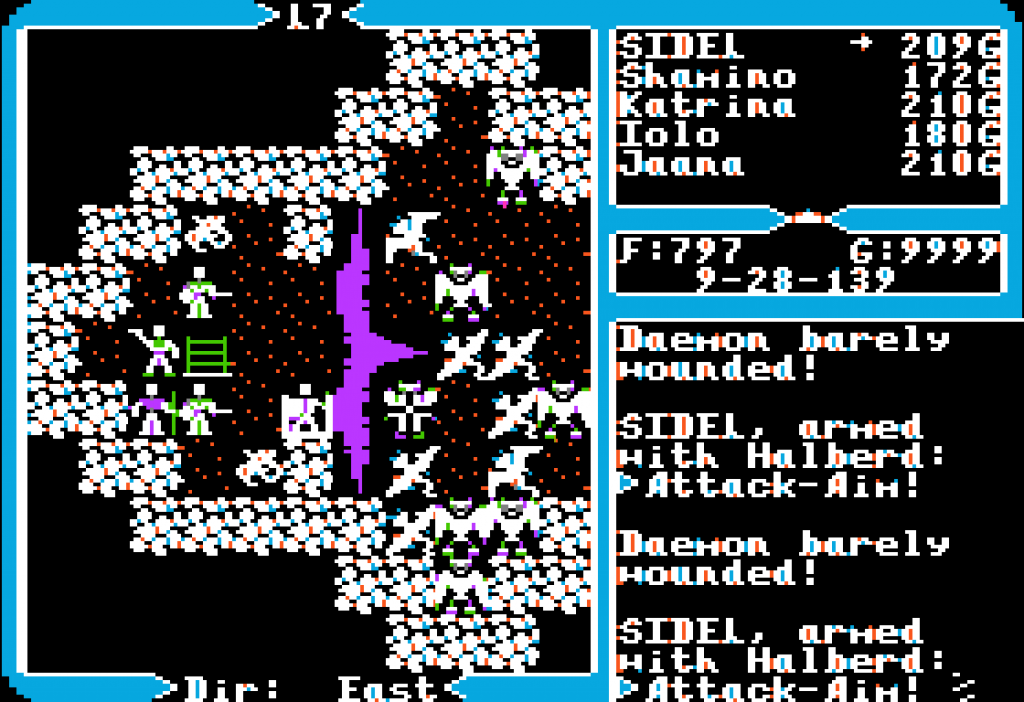
Did I mention that this game is really hard? My teenaged self really had no idea how to play role-playing games with any skill. Level grinding and balancing a party were not concepts I understood very well. On top of these basic skills. The early Ultima games were brutal in the early phases of the game. Players needed to try not being killed by low-level monsters all while having to maintain a stock of food, spells, reagents, gold, torches, and gems. One wrong step or random trap and you are poisoned with only a couple dozen turns to find a cure before your HP dwindled to zero. You really had to have patience and take the time to build up your characters before attempting to finish the main quests.
This is rather difficult to do on actual hardware. I could have loaded the disk images on to my CFFA3000 and played on my IIgs but there is a ton of disk swapping in this game. Also, we had a Mockingboard sound card on our Apple ][+ but the card version we had was not compatible with the IIgs. We got rid of that card with the original Apple ][+. This always sucked because the music is one of the best parts of the Apple version. The Dos version (which I own via GOG.com) looks tons better but is missing these musical cues too.
Playing the game in AppleWin made everything much better. I had all the music, could speed up the game during my many grinding sessions, and I had the ability to save the state of the emulator at any time. I guess that last item is almost cheating as I often would save a state before resting and reload it if I got ambushed at night. But that is not as bad as the extent of my cheating back when I originally played the game and would sector edit my stats. Believe me, I was tempted to edit my food levels during this play-through but resisted (Track $03 Sector $04, bytes #80 & #81). Also, there’s a point after delving into your first major dungeon when gold and food are thankfully no longer an issue. I tried importing my original character disks into my PC, but the disks were corrupted after years sitting in my basement. I just started the game from scratch. I was in this for the long haul.
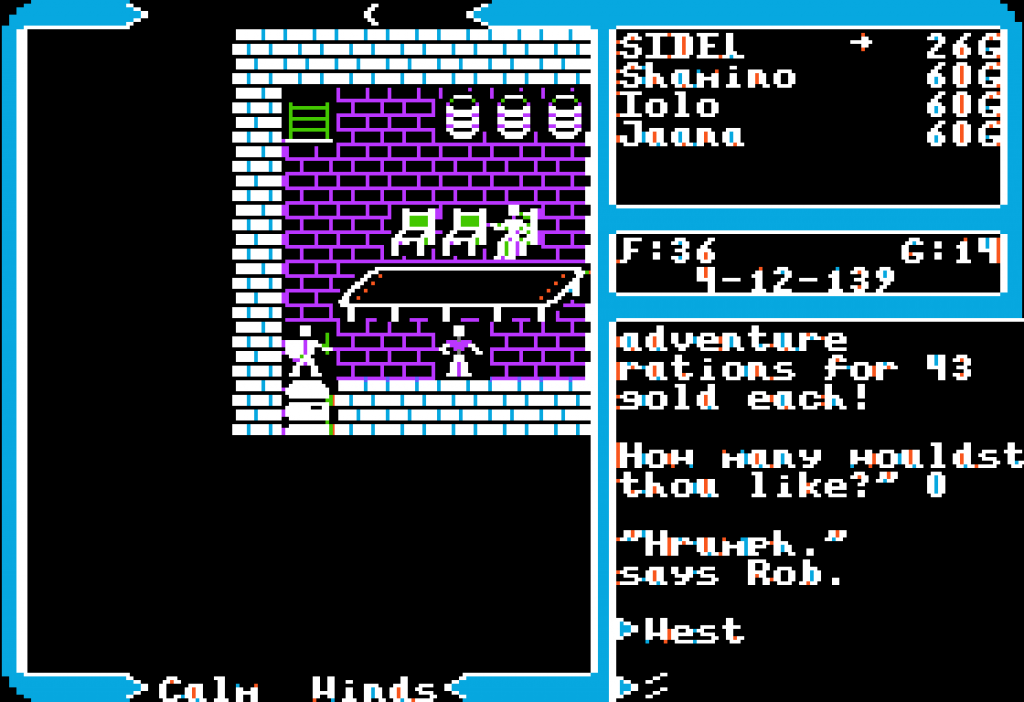
The core of the Ultima games has always been its innovative dialogue system. By using a simple text parser and giving the player control of the exact topic being discussed you are able to return to characters you met previously and glean new information on new topics. These clues emerge as chains of conversations between many NPCs, forcing you to pay attention and immerse yourself in the story. This system would be perfected in Ultima VI a few years later. As with that game, detailed note taking is essential.
Characters and story are icing on the cake but Ultima V was the last of the games in the series to remain true to the combat-oriented design of the original. The tactical turn-based battles work very well considering how simple they are. Magic is useful but not the be all and end all as it is in the Infinity Engine games. A dummy like me can just chop and slice my way through fights. The skirmishes really take shape when you start venturing into the dungeons. We still have a wonderful first-person shift in the dungeons that is punctuated by various custom chambers which switch back to tile-based view. The rooms are filled with treasure and secret switches that made dungeon delving much more fun than I remembered.
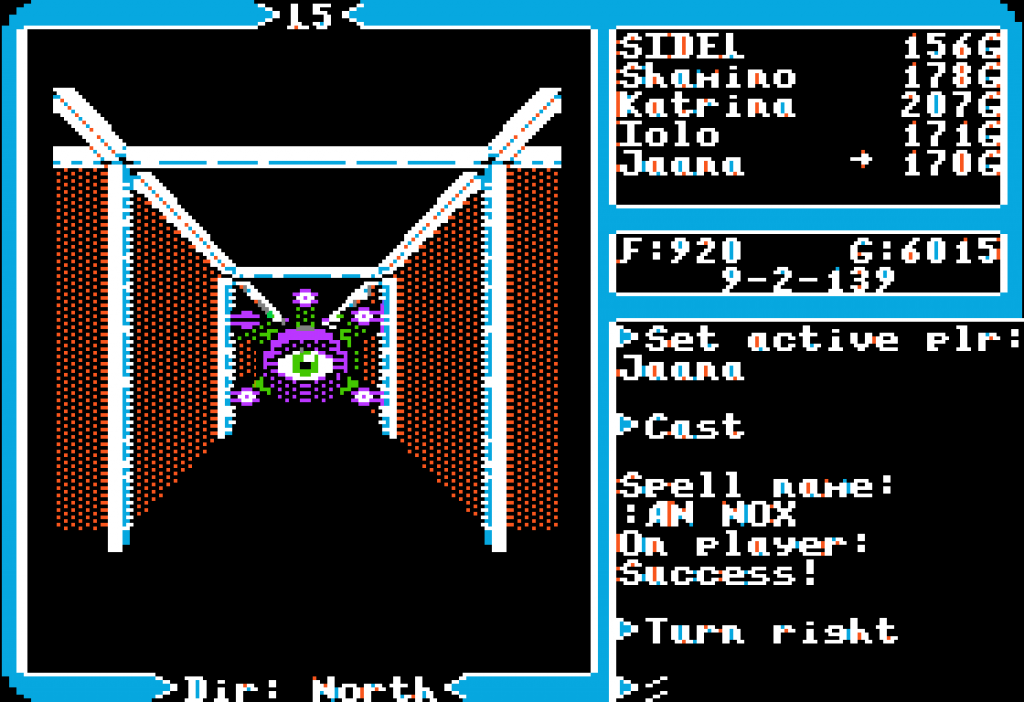
My final assessment of the game is that it ranks up there as one of the best installments in the series. It surely is the best one on the Apple ][ series and would recommend to anyone wanting to play a game on that system to start here. The brutal difficulty and old-school quirks keep me from giving it a 10, but it’s well-worth the effort. And now here are some cool screenshots:
